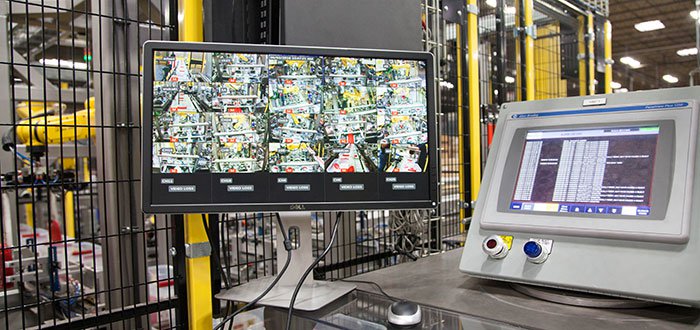
Industry 4.0 - Are you Prepared for the Winds of Change?
Maxx Wright | 15 March 2017
The Winds of Change
The manufacturing world is similar in many ways to hurricanes. The highly volatile, competitive manufacturing and distribution landscape claims corporate causalities every year and can sway geographic regions with its inclinations. Every new wave of technology or thought processes gets a catchy name. Industry 4.0 is no different. Drawing from roots in German manufacturing initiatives, this trendy new label for developing technological tendencies poses potentially life-threatening implications for OEMs and equipment suppliers who don’t keep their feet under them. For now, underdeveloped software, security concerns and high R&D costs are keeping the full force of this phenomena in a decidedly early stage of development, but the first gusts are here and it begs a proper storm warning.
What is it?
Driven by the development of cyber-physical systems and the Internet of Things (IoT), every movement in the modern day manufacturing scope is documented, every step generates information, and for every physical device there is a software representation. As the insatiable quest for efficiency demands higher performance, shorter product life cycles and increased profits, it becomes increasingly vital to harness data as a workhorse, not just an archive. Industry 4.0 takes data collecting one step further and poses three essential questions:
- Can devices decentralize control, function as individual units, and achieve seamless data communication over the IoT (or facility bound, air-gapped networks)?
- Are information systems able to amass data input and make contextually sensible additions to system models to effectively recreate physical processes?
- From a safety standpoint, can a proper hierarchy of control be implemented to gauge what is to be handled by a system and what needs immediate human attention?
Entire Industry 4.0 factories will be running themselves, predicting their own maintenance plans and garnering information to make the “machine” better as a whole. Eventually, groups of factories or entire regions will be communicating with each other as one vast system. However, giving the gift of intelligence to many parts brings drastically increased complexity.
What’s holding it back?
The age old nemeses of fledgling technologies: existing infrastructure, job loss, reluctance to new concepts, and IT concerns. While many of these will be overcome simply by a rising number of companies straining to remain competitive, IT hurdles will prove more arduous. If multiple machines depend on communication to continue operation, a single hiccup or misdirected bit could result in expensive production downtime. IT snags could bring multiple factories to their knees if not properly accounted for in the conception stages of these massive, interconnected networks commanding physical changes and physical machinery.
While decentralizing command and bringing control to much smaller modules will certainly allow greater redundancy for failures, further research and field testing is required before widespread, corporate acceptance of an Industry 4.0 approach. Security in today’s facilities is already a major point of contention and necessary improvement. IT methods are struggling to keep up with advancing technologies. If every device has a system and every system is connected, security becomes a much larger concern.
This challenger of Industry 4.0’s progress will require much time and thought to properly protect assets from malicious intent. For example, the common practice of “air-gapping” servers will become obsolete as the need for connection rises. Tools will need to be created to complement the diversity of systems that will populate facilities in the future.
Wrapping it up
There are many successes currently on display for the Industry 4.0 approach. Called “Smart Factories”, these comprehensive systems are showing the world what it takes to prove integrated system control. Siemens’ Electronics Works, Tesla’s Gigafactory, and GE’s Brilliant Factory are all fully functioning examples of facilities that could accept an Industry 4.0 label. Not only do they incorporate top-of-the-line machinery, they also include incredibly complex data sharing and processing capabilities.
These advancements prove that these systems are far from being simply conceptual and they do indeed exist in modern day manufacturing. Despite the serious concerns that surround Industry 4.0’s rapid integration into modern technology, it is already paving a viable future for manufacturing and distribution advancement.
Comments
No comments have been posted to this Blog Post
Leave a Reply
Your email address will not be published.
Comment
Thank you for your comment.